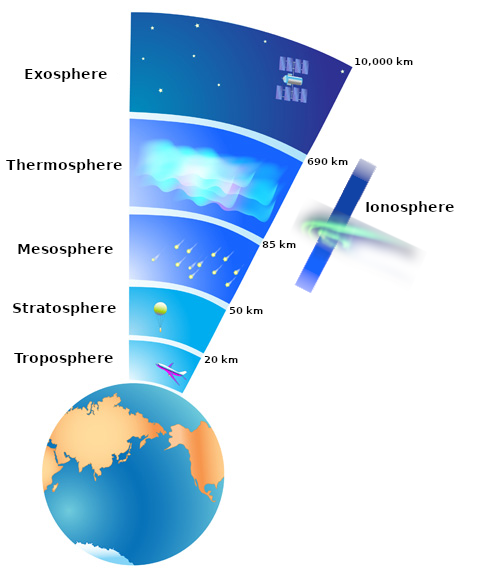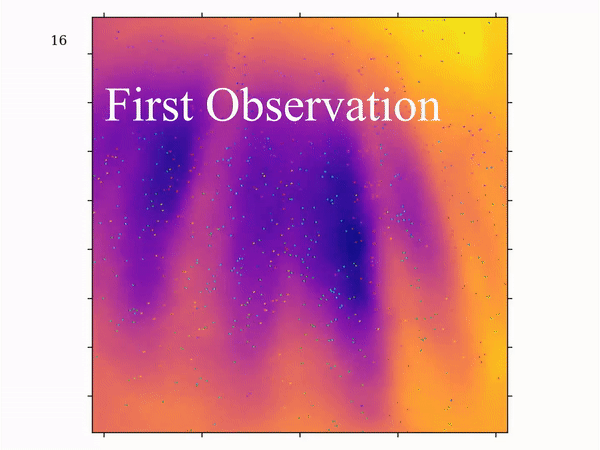January 2019’s “Monthly Media” is a series of observations from Dr Chris Jordan that he has affectionately named “The Fighter Jet”, showing the positional offset due to the ionosphere of known radio sources as they pass overhead of the Murchison Widefield Array (MWA).
Radio sources (such as distant galaxies) can appear to be shifted from their expected position in observations due to density lumps in the Earth’s ionosphere.

Layers of the Earth’s atmosphere. The Ionosphere ranges from the Mesosphere to the Exosphere and is where the aurora Australis and Borialis occur. This region of the atmosphere can change the apparent location of radio sources when it’s “poorly behaved”.
These density lumps refract light, causing the sources to appear shifted from where they would have been in an image if the ionosphere were not there, and are more common when the ionosphere is behaving “poorly”.
A “poorly behaved” ionosphere can be thought of like ripples on the surface of water – when you want to image something underneath, the ripples confuse things.

You can see the radio sources (the dots) passing overhead through the course of the observations. The colours of the radio sources indicate which direction the source has been shifted from where it should be in the image.
The background waves passing through the observations are reconstructed from the source offsets, following the method published in this paper, in order to better visualise the ionospheric disturbances being observed.
While most of the MWA observations made on the offsets of radio sources fall into the previously understood types of ionospheric disturbances, observations such as the “Fighter Jet” do not fall neatly into those categories.
Understanding how the ionosphere shifts the apparent position of distant radio sources can also be used to understand how it shifts the apparent position of GPS satellites, which gives us more reliable measurements for GPS applications, and a better understanding of space weather.
Please explane what is ionosphere lumps. Is it a collection of free electrons of ions?
How is radio waves reflected at the atomic level? Is the energy of radio waves absorbed by the electron, which make it jump to higher energy shell. When the electron jumps down to the lower level, it should emit a photon. Is this photon a reflected radiowave?